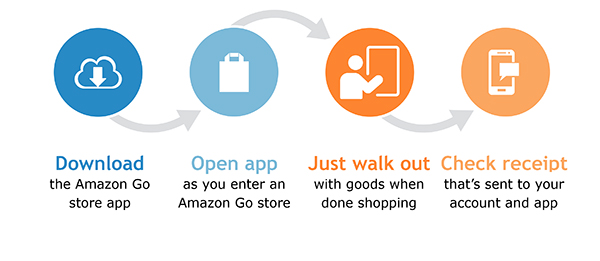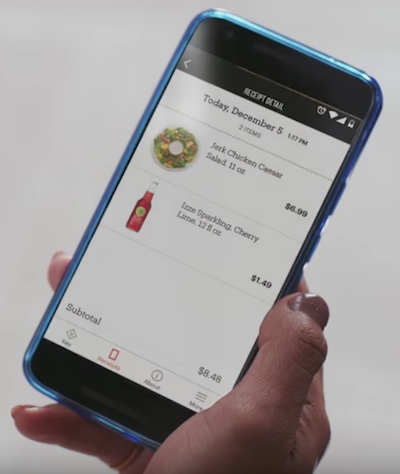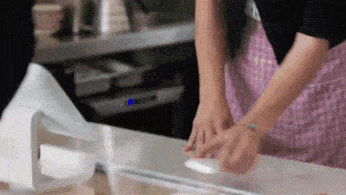What Impact Will the Amazon Go Store Have on SMB Retailers?
That pesky Mr. Jeff Bezos is at it again. First, there were the Buy Buttons for household products. Then there were the delivery drones. Now, he and his little Pacific northwestern business are trying to disrupt retail as we know it with Amazon Go, the new brick-and-mortar Amazon grocery store.
Will it work? How does it work? And is retail as we know it dead?
In this article, we’ll answer these questions and discuss the impact the concept and technology might have on SMB retailers like you.
Informing the analysis and impact is a recent Gartner report, “Amazon’s Go Stores Set to Disrupt the Retail Market,” by Gartner analysts Joanne Joliet, Miriam Burt and Kelsie Marian (content available to Gartner clients).
Unfamiliar with the Amazon Go store, or perhaps need a refresh? Check out their introduction video below.
Here’s what we’ll cover:
How the Amazon Go Store’s Technology Works
Current Challenges of the Amazon Go Technology
How Will the Amazon Go Store Impact SMB Retailers?
What Can SMB Retailers Do Now To Lay A Firm Technology Foundation?
How the Amazon Go Store’s Technology Works
The new concept for the Amazon grocery store eliminates the entire transaction process. Customers simply download and open the Amazon Go app. Walk into the store. Grab items. And walk out.

How does Amazon know what you took? Items are tracked through multiple technologies. And how do you pay? They charge the card tied to the account on the app.
This makes for an efficient and simple shopping experience, but the implementation and technology enabling the new experience is anything but simple. According to our trio of analysts from Gartner, the tech behind the disruptive store leverages:
“… a range of technologies, including mobile devices, deep-learning software and sensors, in lieu of the scanning and check-out process typical of traditional grocery stores. While none of these technologies is new, Amazon is the first to combine and utilize them to power its ‘Just Walk Out Shopping’ experience.”
Here’s a quick, more detailed breakdown of the technology behind “Just Walk Out” shopping:
Deep learning: Revolves around an abundant set of predictive algorithms that generate multiple layers of data that articulate an understanding of an object.
Computer vision: A mechanism for obtaining, processing, reviewing and articulating digital images into numerical or symbolic information.
Sensor fusion: The harmonious analysis of a space by multiple sensors to capture and compute data in a meaningful way.
Interestingly, the deep-learning and computer vision used in the Go store is very similar to the primary components of self-driving cars (what a time to be alive).
With all this deep learning and in-store app usage will come unprecedented analytics for Amazon to mine. According to the Gartner study, the wealth of information gathered by the Amazon Go store app will include data on what customers browse and which products they select—insights that could yield valuable findings around consumer purchase behaviors.
But it’s not all roses for Amazon Go quite yet…
Current Challenges of the Amazon Go Technology
While the concept and benefits are sexy and innovative, the system does have hurdles that it’ll have to overcome. As the Gartner trio points out:
“The customer experience is predicated on 100% accuracy in product recognition, tying the right product to the right person, charging procedures, and payment data security.”
The fact that millennials are no doubt the target customer for Amazon Go serves to amplify these concerns listed by Gartner. A few issues the Amazon grocery store will face include:
How will produce priced by weight be charged? More than a third of millennials in a March 2016 survey indicated they plan on increasing the amount of produce they purchase in the next year. Millennials are no doubt the tech-savvy, target customer for the Amazon grocery store.
How will controlled items like tobacco, alcohol and medicine be monitored? According to the Wine Market Council, millennials consumed 42 percent of the wine drank in the U.S. in 2015. Age verification isn’t a huge technical hurdle, but if Amazon wants to cross the bridge into alcohol sales, they’ll be at the mercy of state alcohol control boards/alcoholic beverage commissions.
How will Amazon account for random placement product abandonment? We’ve all grabbed something in the a store and then decided against buying, lazily tossing it on a random shelf instead of putting it back where we got it. In the Amazon grocery store, you might still be paying for these items.

_No checkout lines, no shopping carts, just… an app?
via Amazon_
Some of these issues will work themselves out, while others will remain long-term challenges as Amazon ramps up the deployment and refinement of this and other brick-and-mortar concepts. But what does all this mean for you, the SMB retailer?
How Will the Amazon Go Store Impact SMB Retailers?
The big question on your mind and the mind of your peers is “how is this technology going to affect my business”, right? You might be worried that “Just Walk Out Shopping” will become status quo, especially after other players (Walmart, Target, Whole Foods) join in on the fun.
While it’s a revolutionary concept, you needn’t fret about it affecting your business anytime soon, if at all. Here are a few reasons you can rest easy:
Retail customers are slow to adopt even the most innovative tech trends. How many customers used a mobile payment app to complete a transaction in your store last year? More than 50? 20? 10?
Our mobile payments guide reported that 91 percent of consumers surveyed in March 2016 had not used a mobile payment app to make an in-store payment.

Apple Pay accepted on Square’s Contactless Reader via Square
This tech was supposed to revolutionize the payment industry, but consumer adoption has been lackluster.
While there’s a number of reasons for this, the biggest one to me is that the in-store payment/transaction process isn’t and was never broken—and I’m here to tell you that retail stores aren’t broken either.
Great retail businesses aren’t built on fads. At the end of the day, you have a business to run, likely by yourself. And it has to be built on a solid foundation of branding, messaging, products and principals.
Sure, it’s fun to keep up on trends and be forward-thinking, but you’d be reaching pretty far out on a limb by focusing on “Just Walk Out” tech at this point for your SMB store.
And while you’re focusing on that, who’s ensuring your inventory is well maintained? Who’s analyzing your sales and customer data to pinpoint shopping trends and valuable patrons?
Customers will keep coming back for your exceptional shopping experience. You just simply have to keep doing you, whether it’s selling custom knitted socks for pet rabbits or amassing and offering an inventory of fine dinnerware from across the globe, or just putting birds on things.

Just do you
Sure, “Just Walk Out” technology might work its way into some smaller stores and draw crowds for its novelty. But if you’ve worked hard to care about your customers and provide them great experiences, they’re not going anywhere.
These are just a few reasons why you shouldn’t be afraid of disruptive retail innovations like this. But a lack of fear and worrying doesn’t mean you can’t prepare and invest in the operational stability of your retail business.
What Can SMB Retailers Do Now To Lay A Firm Technology Foundation?
You may not have the budget to implement Amazon’s computer vision or deep learning algorithms, but as I’ve written about many times before, the best “technology thing” you can do for your retail business is adopt and properly implement (or upgrade to) the right POS system.
If you’re unfamiliar with POS systems, they’re the technological backbone for SMB retail operations. The automation, data collection and reporting that these systems provide heighten operational efficiency and give you easy-to-understand snapshots of your business’ performance.
The right POS system, properly implemented and fully equipped, is the best technology foundation you can have as an SMB retailer.
If you’re still struggling to find the right system for your business, we can probably give you some software advice. There’s a couple ways we can help you:
Take our brief retail software questionnaire about your business and technology needs. This helps us help you whittle down your options.
Read real user reviews about POS systems from your retail peers to get a great snapshot of what systems to include on your POS shortlist.